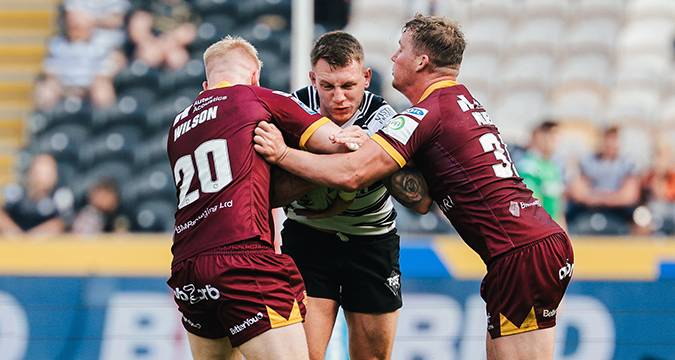
MOST sports have some degree of risk to the health of their competitors.
Boxing is perhaps the most obvious example, with the danger of boxers suffering head trauma, but the rugby codes and football perhaps come fairly close behind, given the danger of concussion from head tackles in the case of rugby, or heading the ball in the case of football.
Those risks will never be entirely eliminated.
But that is no reason not to make Rugby League as safe as possible without changing the essential character of the game.
You will see on page 11 of this issue the changes that will be introduced into the professional game.
The main on-field change from 2025 is that the tackle height must be restricted to the armpit or below of the player who is carrying the ball.
And that rule will be introduced in 2024 for the Academy and other age-grade competitions as well as in the community game.
The club coaches know that this change is coming soon and they will already be considering how to train their players to adapt to the new rules.
The RFL will also apply recommendation number 18 from next year, which is to increase the penalties for any direct contact without mitigation to the head. Any player who contacts the head of an opponent through faulty technique is likely to be dismissed from the field and will receive a Grade D sanction, with a suspension of at least two to three matches and a fine.
It means that we may see an upsurge in the number of incidences of teams playing with fewer than 13 players on the field, at least until the players can fully come to terms with the changes.
Obviously the changes are intended to reduce the number of times the defending player’s arms hit the ball-carrier’s head.
And if the tackler has to hit the ball carrier below the armpit, I would hope there would be less chance of head-to-head contact, which often gives rise to the most concussive collisions.
The fact is that head injuries in Rugby League represent a growing crisis that needs to be dealt with now if Rugby League is to survive in a recognisable form 50 years from now. Without radical change, and with greater knowledge about the long-term effects of concussion now far more widespread, we will struggle to attract young people to play the game.
But having said that, the contact element of the sport has to remain essential.
Rugby League players recognise that they have chosen to play one of the toughest sports there is and for some of them, that is why they have chosen to play our sport. And players should always be free to assume those risks, while being protected as far as possible from needless risk.
We have seen other sports take action to make themselves safer, notably Formula 1, which used to have regular tragic loss of life when I was a youngster but which is now many times safer.
The measure of success for Rugby League will be a significant reduction in incidents of concussion in all sectors of the game.
My reservations
Having said all that, there are some things that concern me about the proposals that the RFL will be putting into effect.
The most important of those is what will happen to the international game if the NRL doesn’t follow our example and change its own tackle laws.
Ideally they will make the same changes to the laws of the game, as will the International Rugby League (IRL).
If that doesn’t happen, how will international matches be played from 2025 with international teams coming together with quite different tackling rules?
That is a problem that will need addressing by the IRL.
My second concern is right at the other end of the scale.
From next year, no tackles will be allowed among youngsters aged under seven, who will therefore have to play touch or tag rugby.
That will be extended to under-eights from 2025 and under-nines from 2026.
My view is that youngsters within those age groups are generally too small to inflict serious damage on each other and that they benefit from being able to learn good tackle technique at a very early age, which becomes more difficult to learn against bigger opponents as they get older.
So I would be interested to learn why this rule modification has been proposed and of course I am quite prepared to be proven wrong if the evidence shows that there is a good reason for making such a change based on the facts.
Thundering good news
The best news of the week is the fact that Newcastle Thunder’s application to play in League One in 2024 will be submitted to the RFL this week and will surely be approved by the governing body.
Thunder have already been included in the fixture list, as you will have seen in this newspaper recently, so their approval looks to be a formality.
And I’m glad that they will continue to play at Kingston Park under the coaching of Chris Thorman.
They are likely to start the season with an inexperienced squad but at least they should get a very good attendance when they host York Knights and Wakefield Trinity in the early rounds of the 1895 Cup, even if they suffer heavy defeats in those games.
Can I wish everyone connected with Thunder the best of luck for a successful revival as the new season gets under way.
